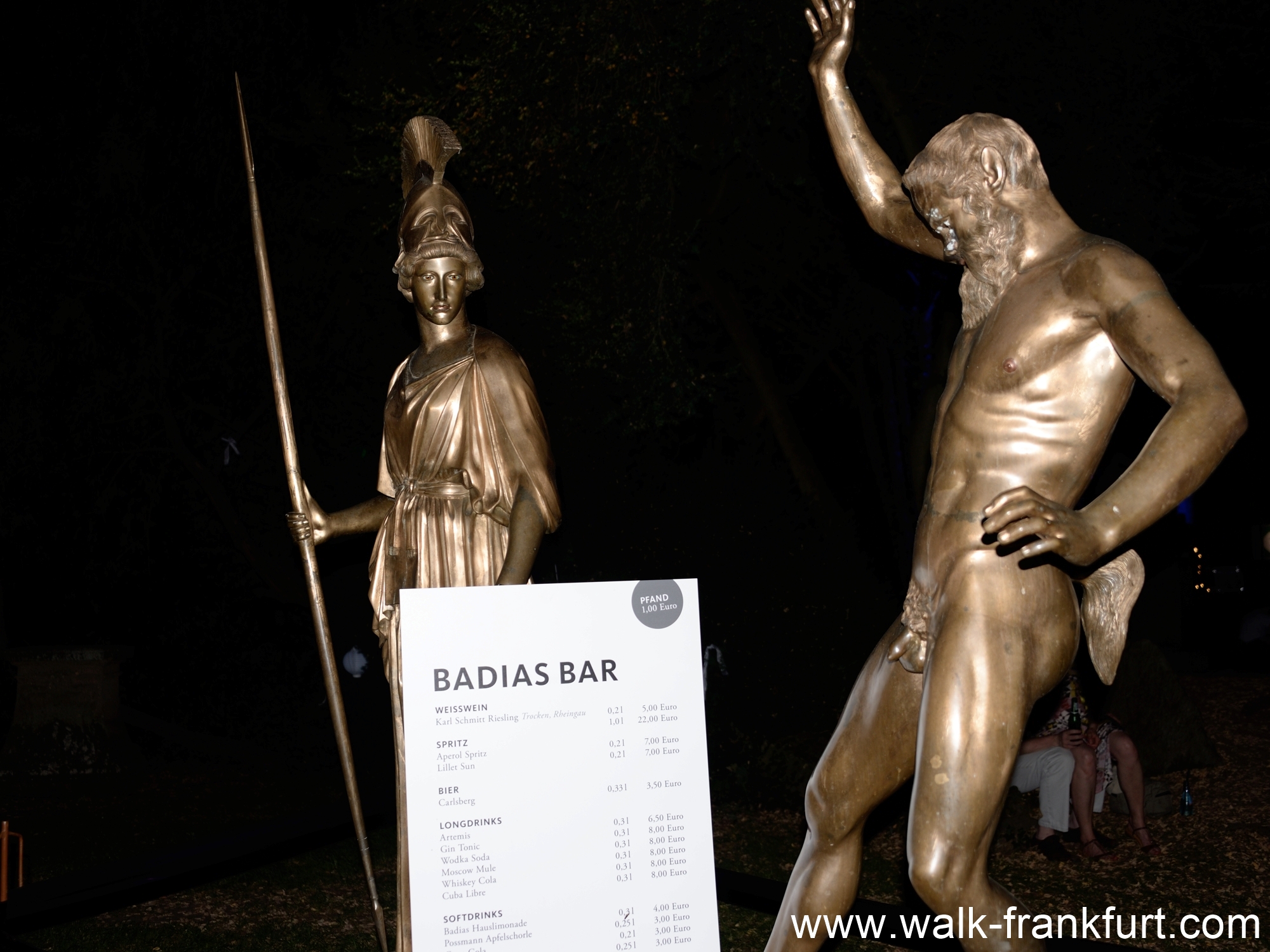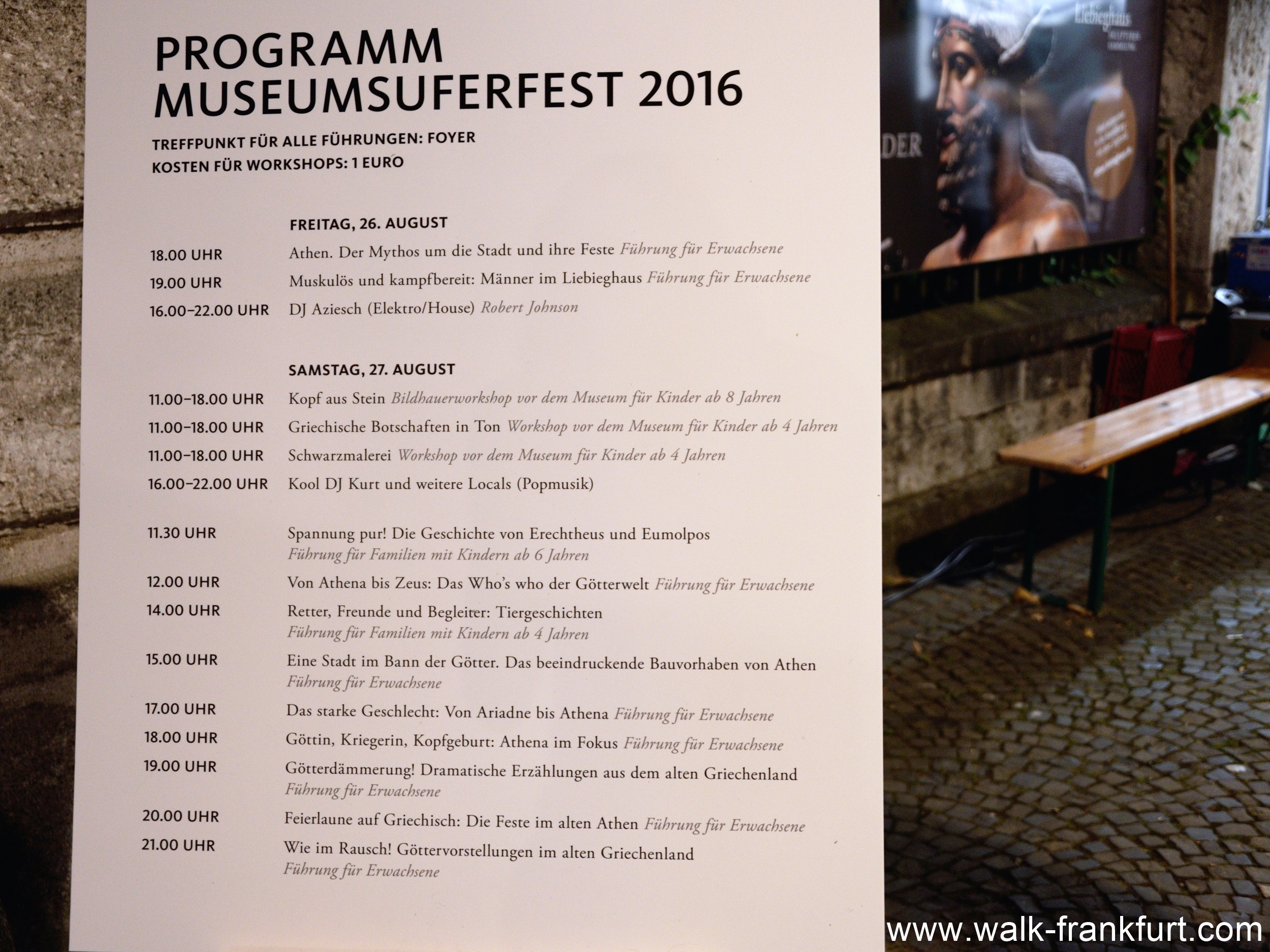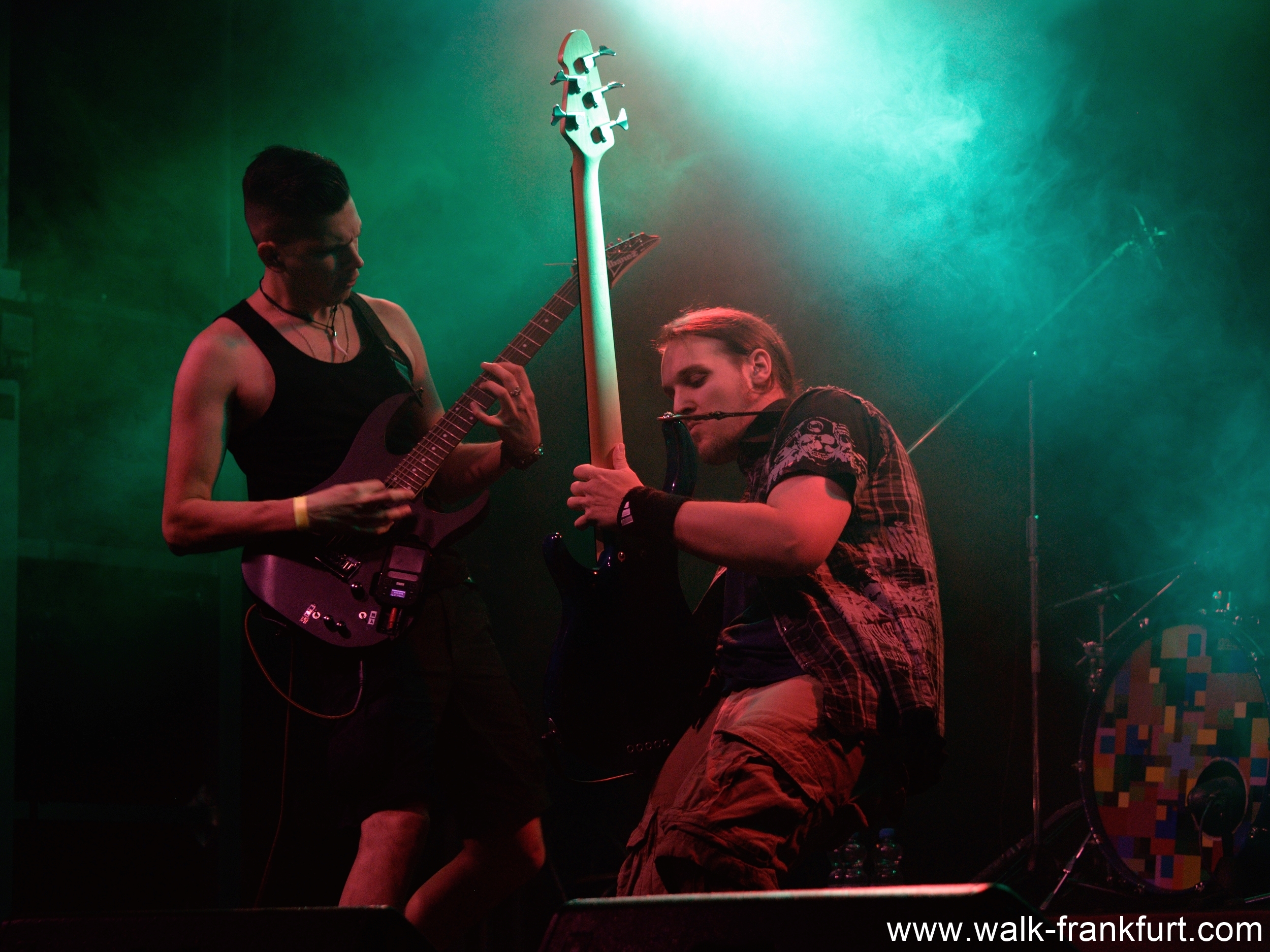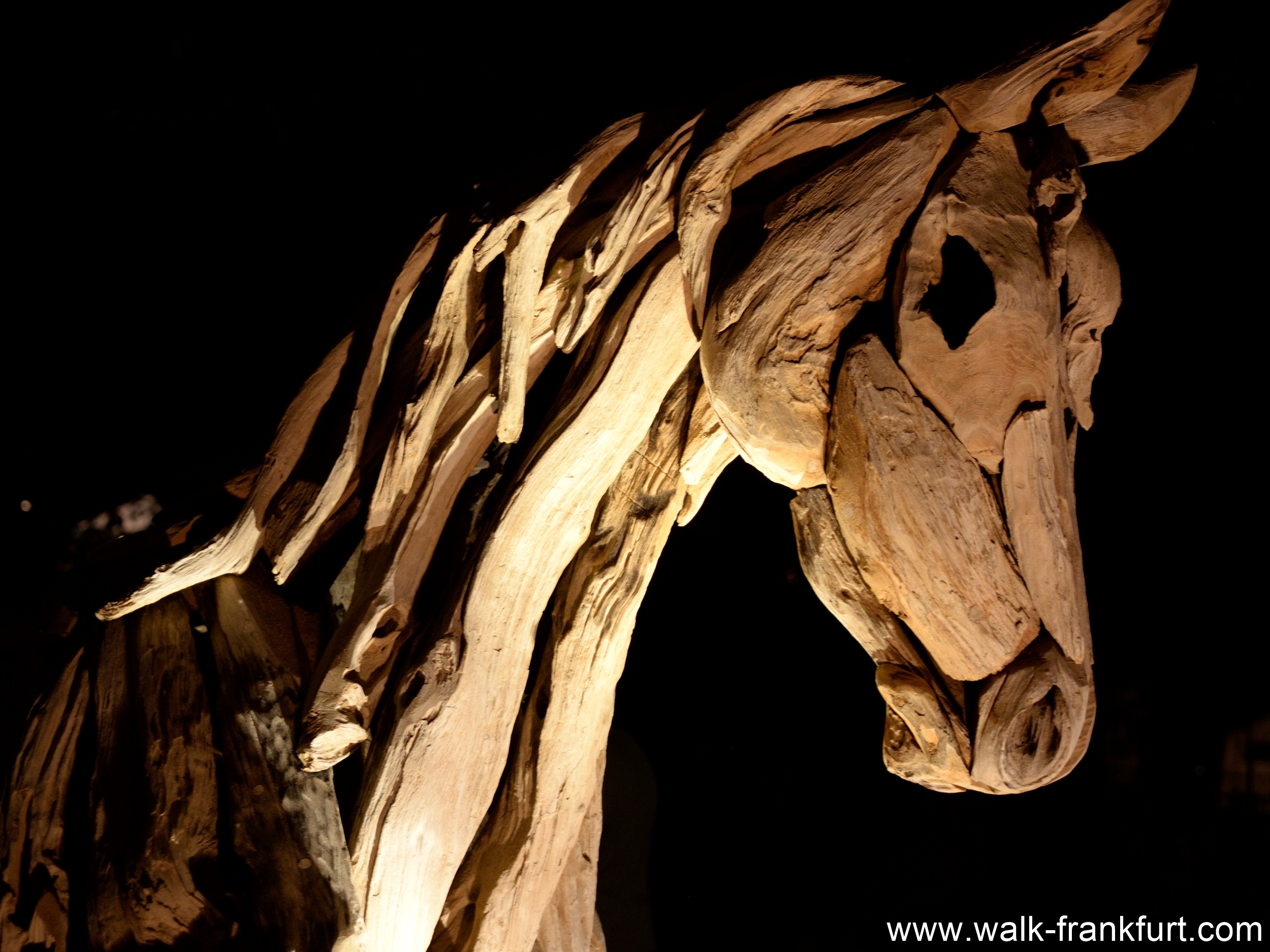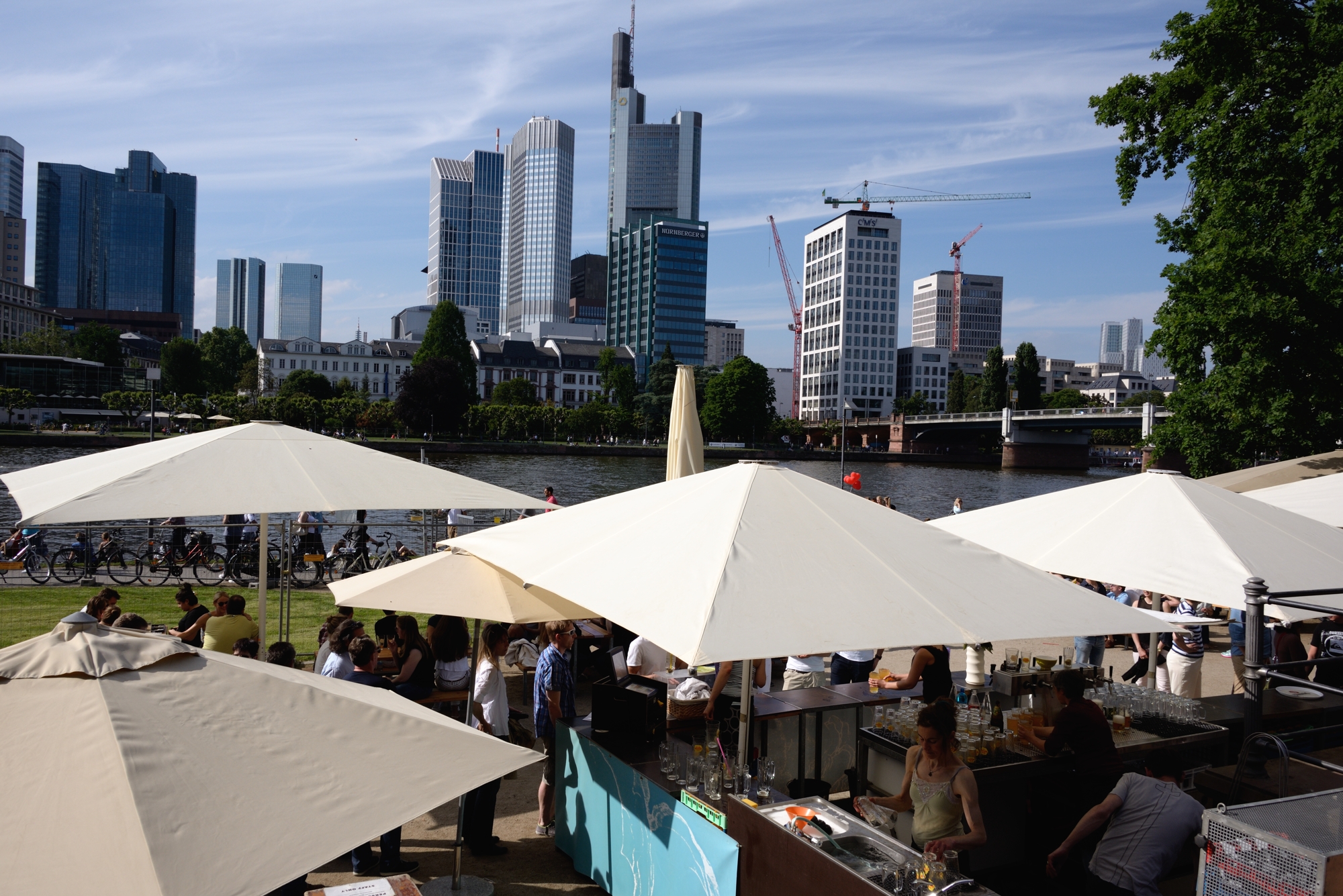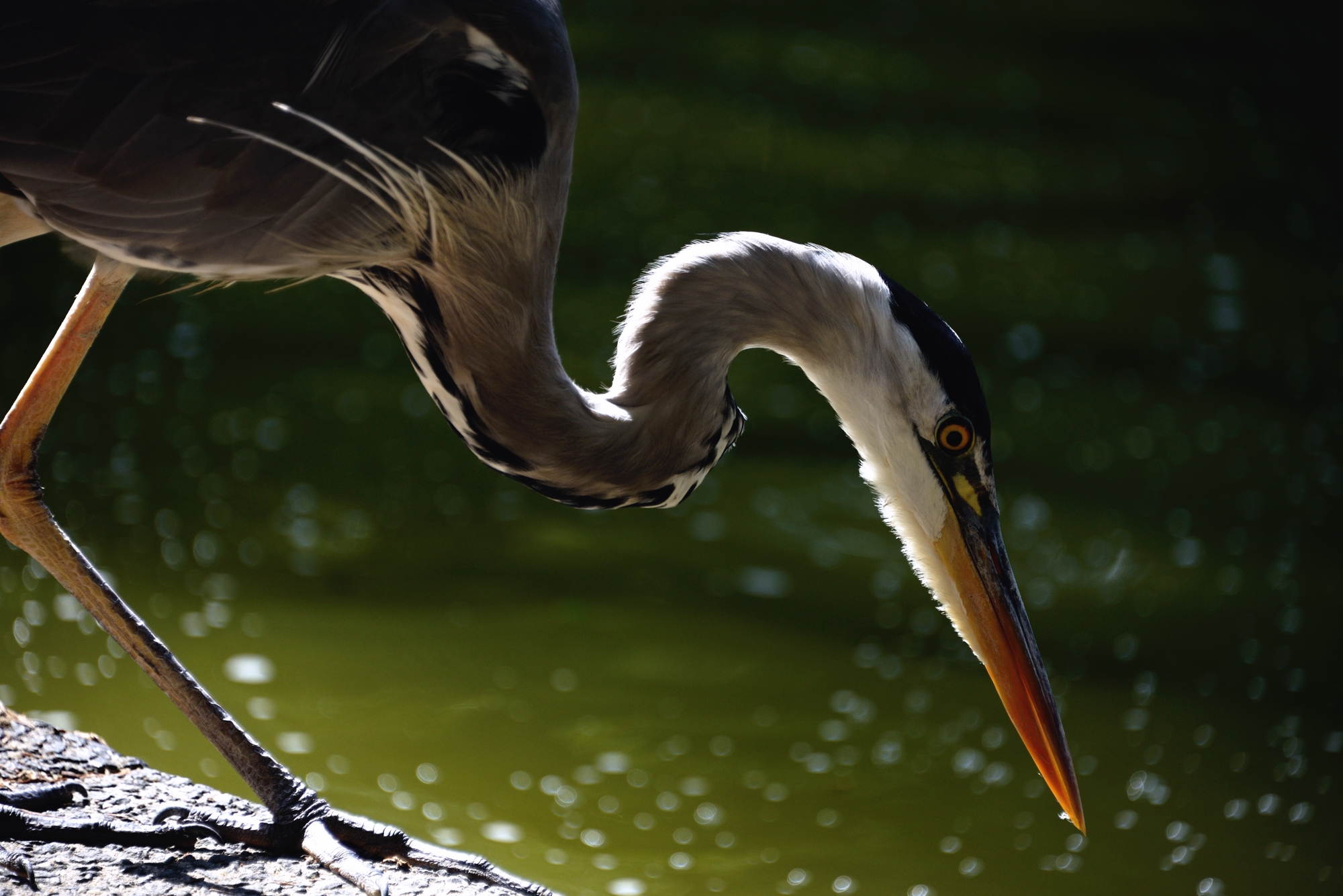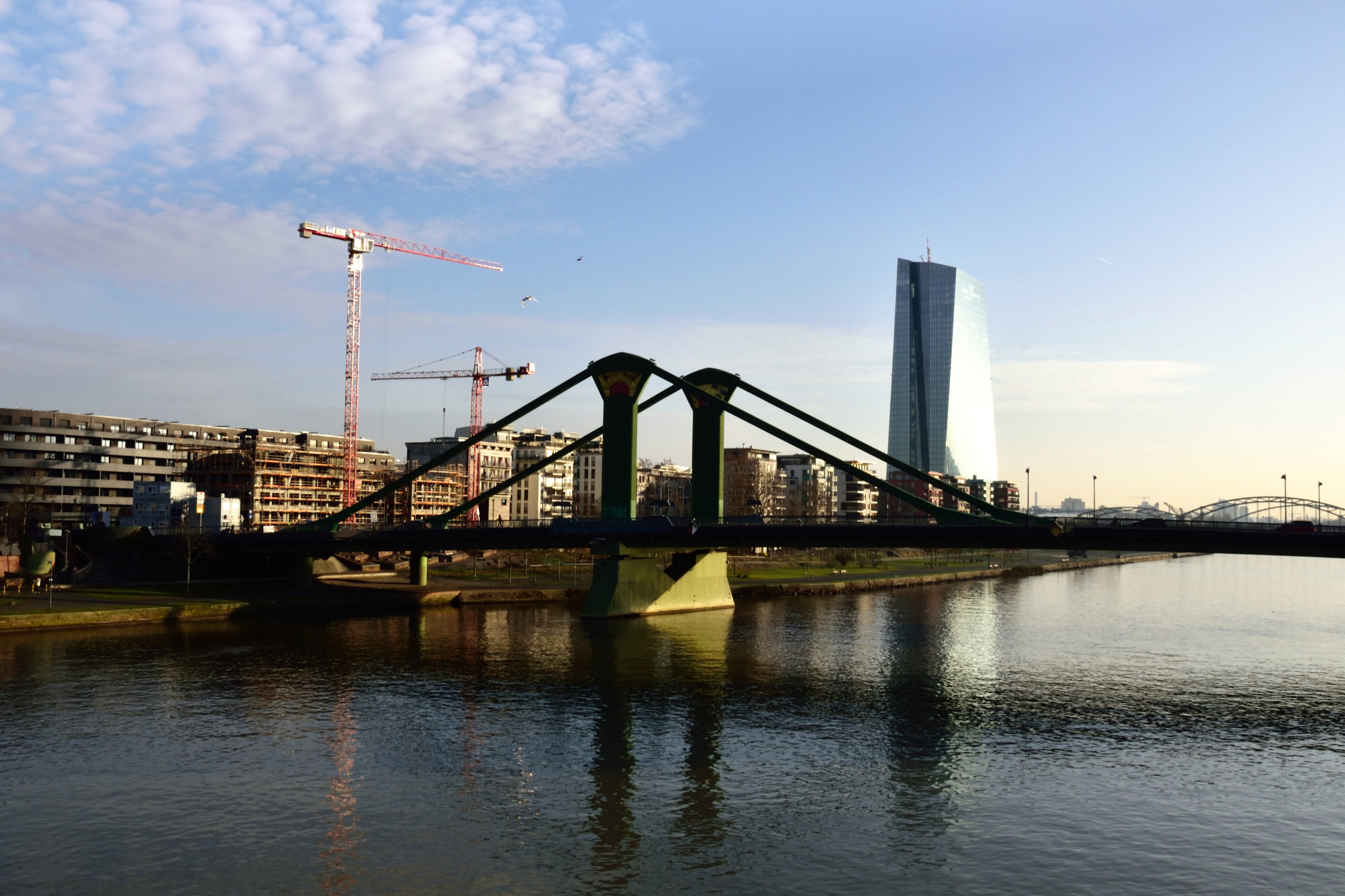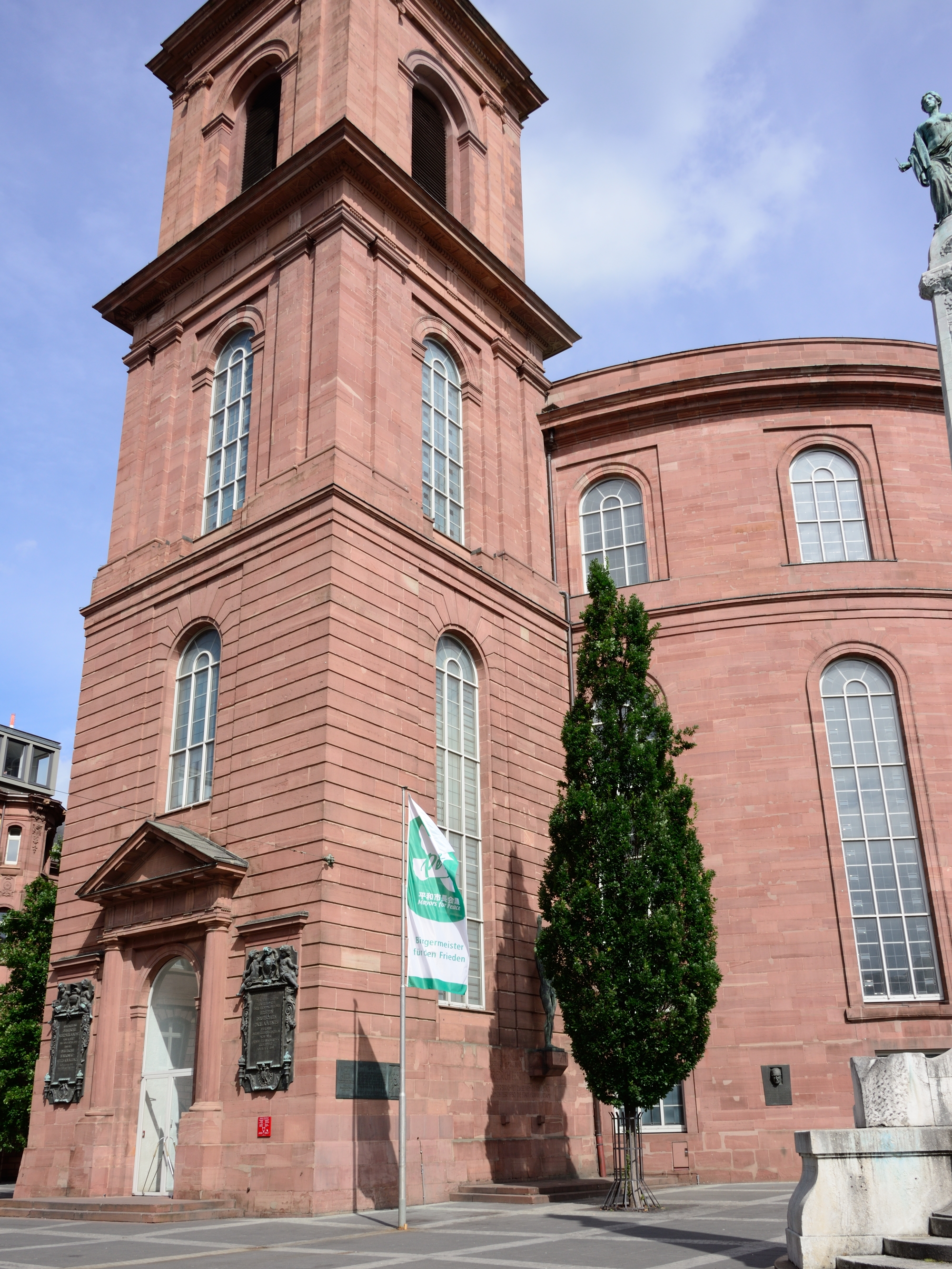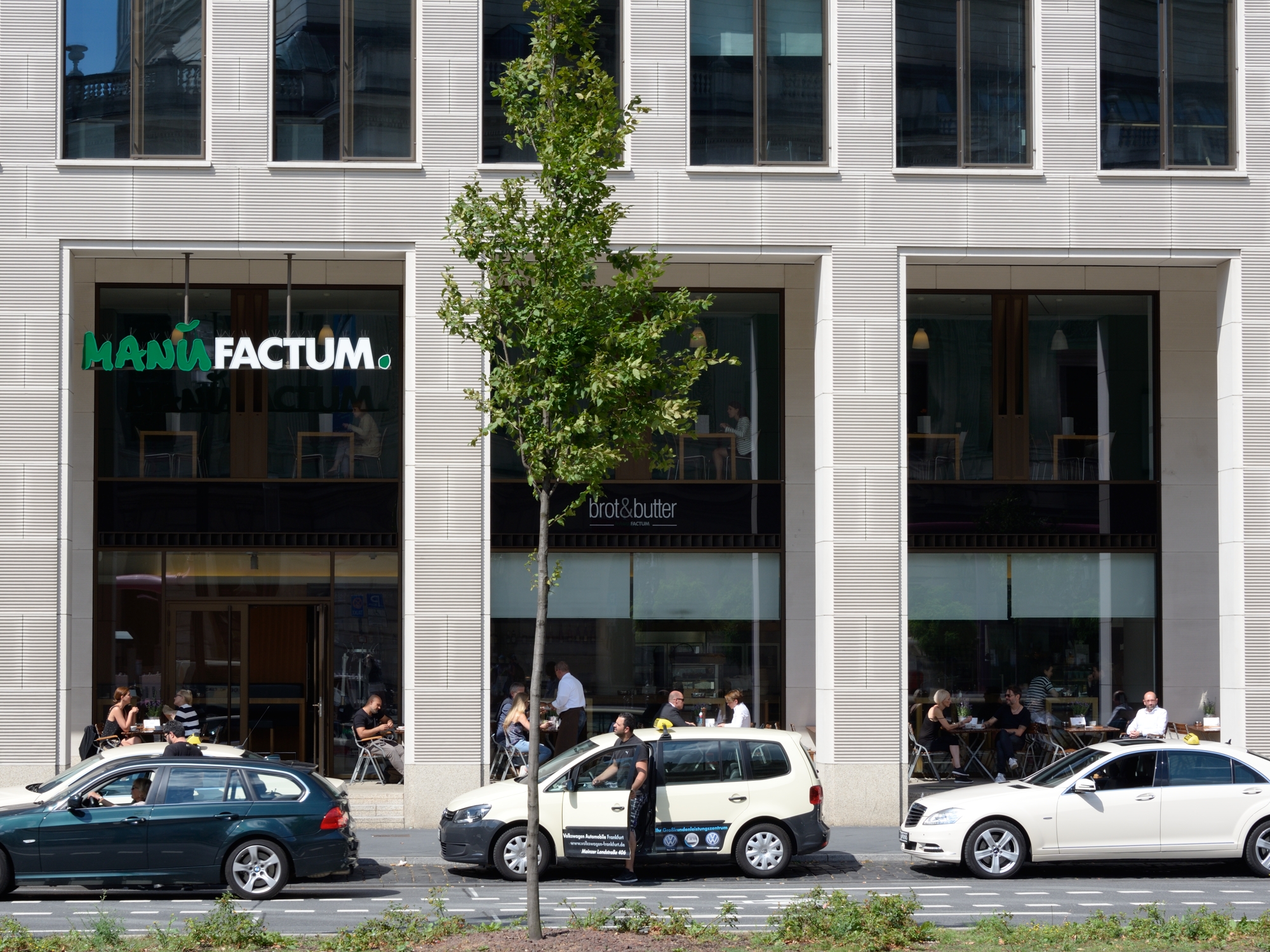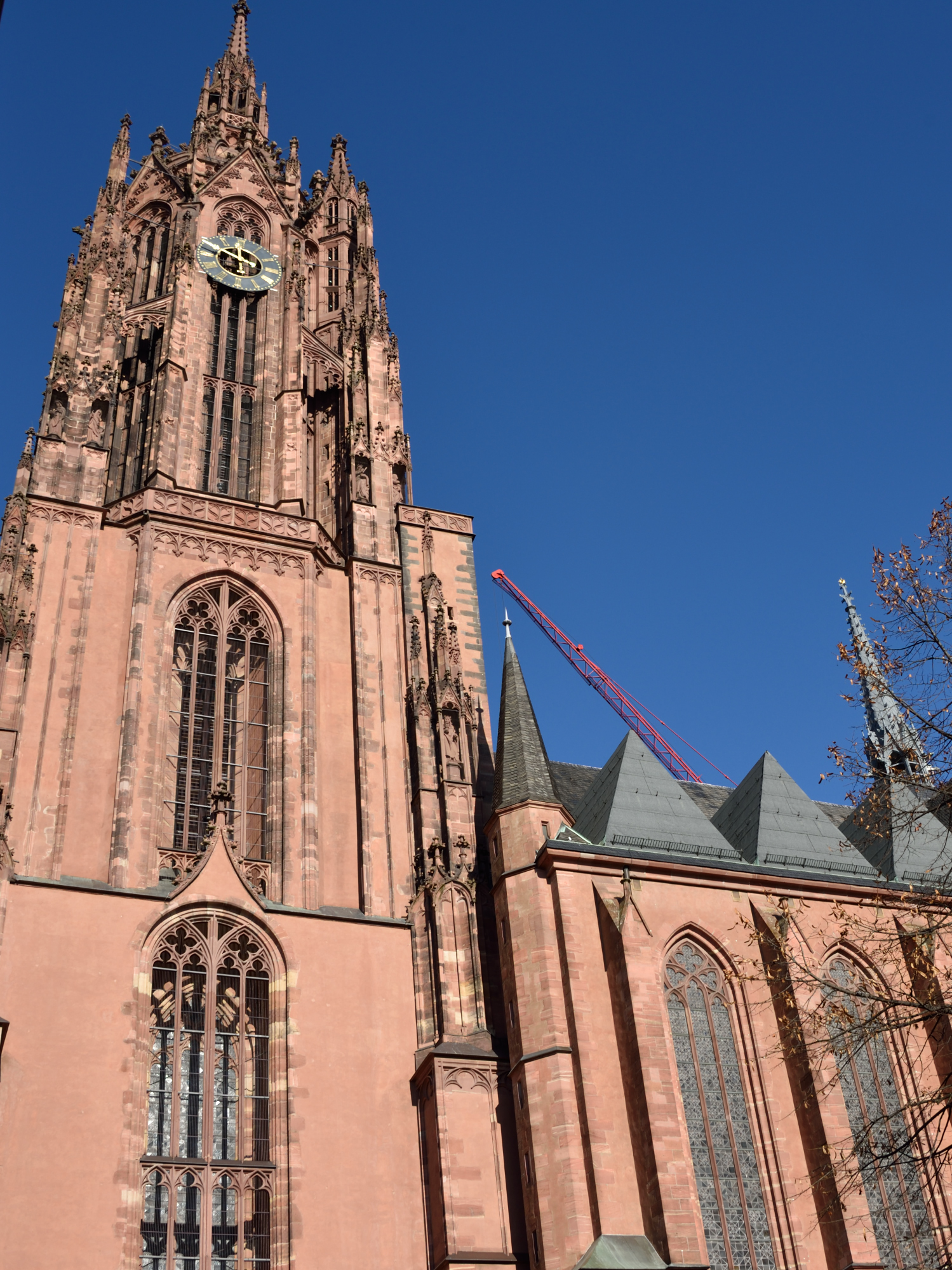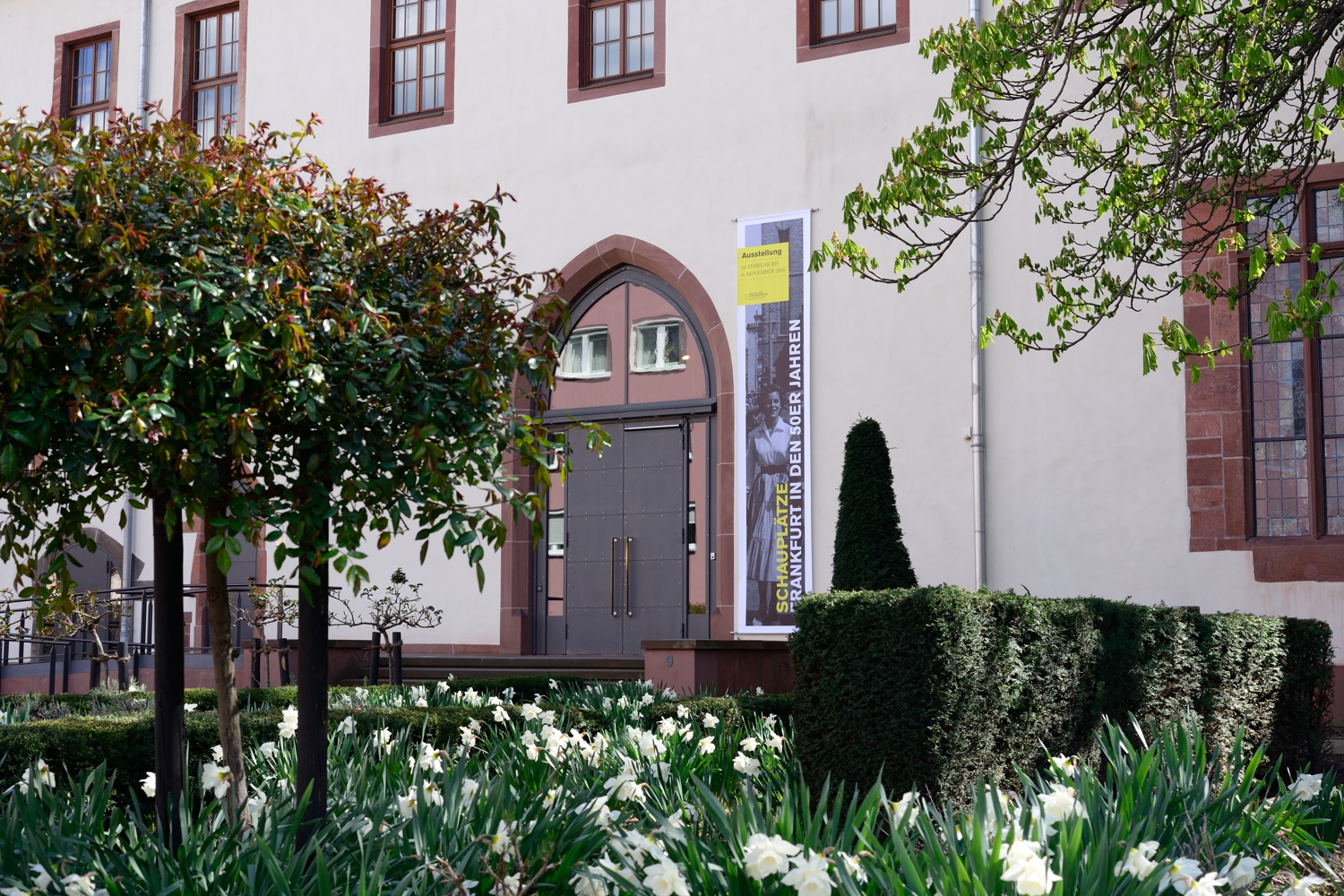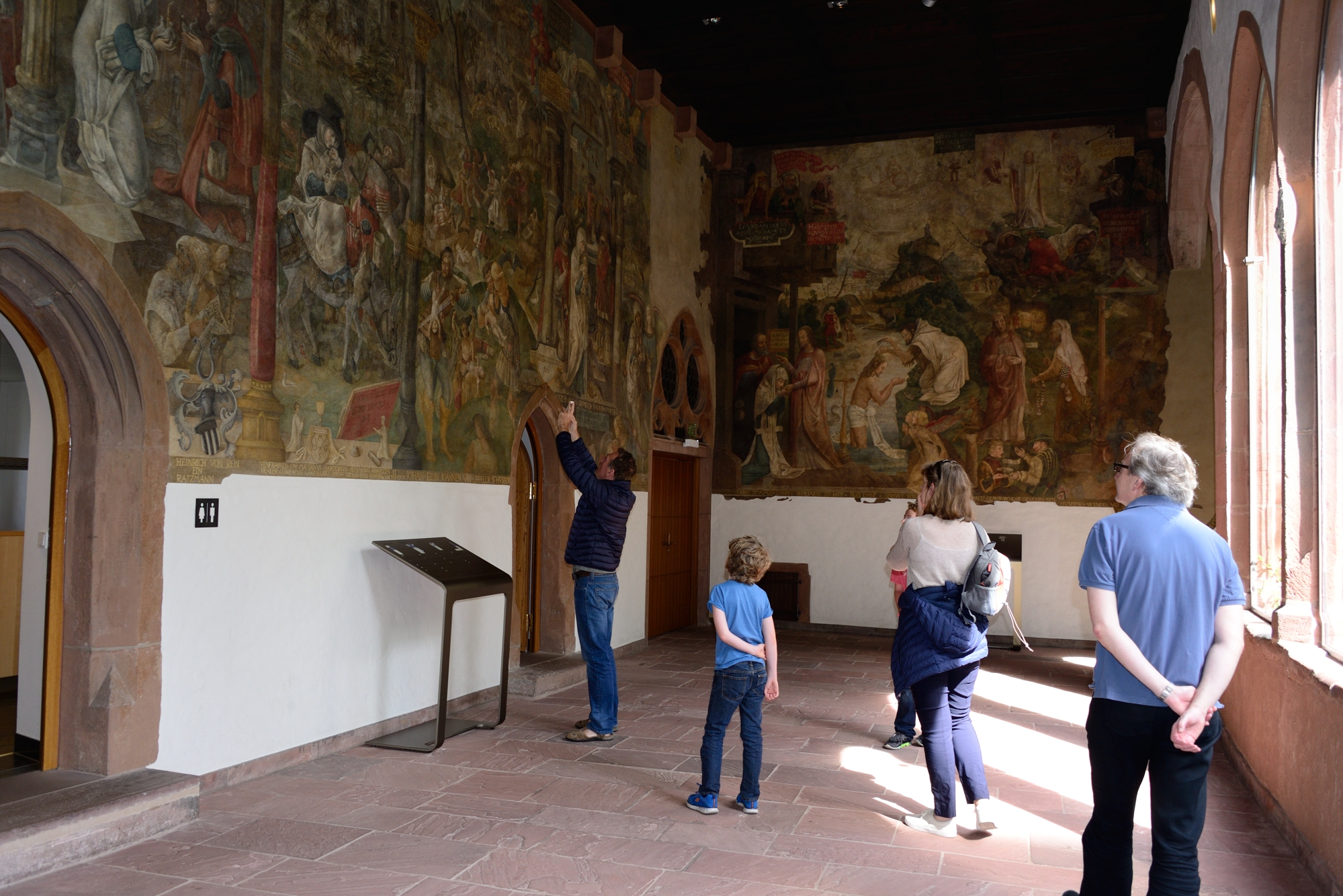Jewish history in Frankfurt
Frankfurt has a Jewish history dating back to at least the 12th century and there is some excellent information on the web to guide you to key cultural sites within Frankfurt, http://en.juedisches-frankfurt.de/
There are two museums in Frankfurt city centre dedicated to Jewish heritage in the city, both offering extensive information in English as well as German. The museum of the Jewish Ghetto, Batonnstrasse 47, displays the original foundation stones of the Frankfurt ghetto, first built in 1462. The Jewish Museum Frankfurt, Bertha-Pappenheim-Platz 1, has exhibits detailing Jewish life in Frankfurt from the 1800’s onwards.
In addition to these two central museums, is the Bildungsstätte Anne Frank, a small exhibit dedicated to Anne Frank, whose family lived in Frankfurt until they moved to Amsterdam to avoid the persecution of the National Socialist regime. This museum is easily accessible by taking the U-bahn (1,2,3 or 8) to Dornbusch. During my last visit they were exhibiting the original diary of Anne Frank.
An exhibit from the Bildungsstätte - Anne Frank in Frankfurt
As well as the information listed on web about Frankfurt Jewish culture there are some additional places to visit which have a Jewish connection. Up near the old opera house is the Rothschildpark, situated on land where the Rothschild's once lived. A placard by the park entrance, on Bockenheimer Landstraße, offers information and photos about the family home that once stood there.
Not far from Konstablerwache is a remnant of the old city wall, the Staufenmauer, dating back to the 12th century. It's also the north entrance to what used to be the Jewish ghetto, first constructed in 1462 and, up until 1815, Jewish residents were confined to living there. Today nothing exists of the old ghetto but walk through the old north entrance and head south towards the Jewish ghetto museum (Museum Judengasse) and you will be treading the path of where the ghetto used to stand.
Staufenmauer, the 12th century city wall and the entrance to the Jewish ghetto.
As you reach the Jewish ghetto museum, on the south east corner of Kurt-Schumacher-Straße and Battonstraße, look out for some brass plates laid into the ground with house names on them, e.g. Goldenes Schaf. The brass plates outline where some of the ghetto houses previously stood and are part of the museum exhibit. The entrance to the Jewish ghetto museum is 30 metres along Battonstraße and it is the ideal place to visit for more information about life in the ghetto.
Next door to the museum, is the old Jewish cemetery, in use from the 1200's through to the 1800's. Around the cemetery walls are listed almost 12,000 names, the names of the Jewish Frankfurt citizens murdered during the holocaust. Follow the wall to the south side and into the Neue Borne Platz, previously the old Jewish market place, today it is a permanent place of remembrance. If you wish to enter the cemetery a key can beborrowed from the museum, but only on production of a valid ID card.
A name Block from the Jewish cemetery wall memorial.
This link also gives details of the other two Jewish cemeteries in Frankfurt, which are both accessible via a short ride on the U-bahn.
In the heart of the old town, on Römerberg stands the Alte Nikolaikirche. Step inside and notice the colourful stained glass windows in the south wall and one to the west. These windows formerly belonged to Carl von Weinberg. Born into a Jewish family in the 1880's he converted to the evangelical faith however, because of his Jewish beginnings, the National Socialist regime reclassified Carl von Weinberg and forced him to sell his estate. The window's creator, Lena von Schauroth, took the windows for save keeping and in 1951 permission was given for the windows to be installed in the Alte Nikolaikirche. Another relic from the von Weinberg estate is the Florentine fountain, an original 16th century renaissance sculpture which can be found in the Wallanlage park, next to the Nebbiensches Gartenhaus.
The Wollheim memorial in the Goethe University grounds, Frankfurt.
The Goethe University grounds in the Westend, house the Wollheim memorial, dedicated to slave labourers forced to work at IG Farben during the second world war. The main university building is the former IG Farben headquarters. The public are free to walk around the university grounds which connect up with the Grüneburgpark, and the Botanical Gardens.
Many of Frankfurt's museums are free on the last Saturday of the month
SaTOURday - free entry
On the last Saturday of every month the museums of Frankfurt open their doors and offer free entrance, this event is known as SaTOURday. There are a few museums who exempt themselves from SaTOURday as follows:
In August and December there is no SaTOURday at any museum
The following museums do not participate in SaTOURday and still charge an entrance fee, but check the Museumsufer website in case additional museums are added to the list:
The Film Museum (Deutschen Filmmuseum)
EXPERIMINTA Science Centre
Goethe House Museum (Goethe-Haus)
Communication Museum (Museum für Kommunikation)
Senckenberg Natural Science Museum (Naturmuseum Senckenberg)
The Palm Garden (Palmengarten)
The Städel (although not on the Museumsufer exemption list, a reader recently reported that he had to pay despite it being SaTOURday)
A huge variety of museums within walking distance
During the winter months the museums are great places to go and get away from the cold outdoors and there are 34 museums to choose from. Information about the museums can be found, in English, on the Museums Embankment website.
The variety of museums is astounding; modern art, classic art, photography, film, natural history and many of them are within walking distance of each other along the Museumsufer on the south bank of the River Main (see image below and this map link will take you to the original map)
The curators have done an incredible job of raising the profile of Frankfurt's museums and, as a result, World class exhibitions regularly visit the city and for example the Schirn Art Hall has worked in conjunction with the Tate, London and the Centre Pompidou. Many of the museums have a cafe, accessible without paying an entrance fee, that offer freshly made lunch options, drinks and cakes too.
Map of the Museums located centrally in frankfurt
Value for money cards
If you live in Frankfurt and like to visit the museums frequently then the Museums Embankment card is great value for money and, once bought, offers free entrance to over 34 museums and all exhibitions. Just ask for a museums card at the reception of any museum when you visit. You'll be issued with a temporary paper pass which is usable until your official pass is sent in the post.
Adult card - 89€ annually (2023)
A family of two adults and two children 150€ annually
Students (between 6 and 18) 45€ annually
Value for tourists and visitors
If you are simply visiting Frankfurt then an alternative option is the MuseumsuferUfer ticket which offers free entrance to 39 museums and exhibitions for two full days. It costs just 21€ (2023) or for a family of two adults and two children, a ticket costs just 32€. Again, just ask at the reception when you visit the first museum and they will issue the ticket. If the museums are closed on one of the days you are visiting (museums are shut on Mondays) then the ticket is valid for the following day.
The Städel museum, opposite the Holbeinsteg (bridge) on the Museumsufer
Museumsuferfest August 25th 2017
The annual Museums Embankment festival is in the heart of Frankfurt and not to be missed. It is the largest outdoor festival in the region with stalls and booths on both sides of the River Main offering a huge variety of gastronomic delights plus beer, wine and bands who play into the early hours, and its free! This year the festival runs from Friday 25th August through to Sunday 27th. The festival is in walking distance from most hotels in the city centre, if you're staying/living further out, this link offers a map of tram, bus and U-bahn stops nearby.
For a printer friendly (less images) version of this post -> Frankfurt-Museums-Fest
Along the river bank by the städel at the Museumsfest, in Frankfurt.
The Museumsuferfest Button
A major highlight of the festival is the 7€ badge - this gives you free access to 23 museums in Frankfurt the whole weekend, starting from 3pm on Friday 25th until closing time on Sunday 27th. You can buy the badge, or 'button' as the locals call it, from any participating museum or from the Tourist Information Office. This link lists all the museums taking part and also has the extended opening times during the festival weekend.
the Museumsuferfest 'button' For free Museum Entry
What to do and see at Museumsuferfest Events and Stalls
During the day, visit the many stalls along the south side of the river bank. Up at street level, starting from the Friedensbrücke, walk through the many stalls selling second hand books, vintage vinyl and local art and crafts. Down at the waters edge, close to the Holbeinsteg, local artists also display art and sculptures.
As you progress eastwards, at the street level, the stalls change to booths offering food and drink. Down on the riverbank itself, there is more food and drink and live music too.
By the evening the festival turns into a party atmosphere. Live bands, and DJ's playing sets from techno to rock, there is something to suit everyone's musical taste. All events are listed in this link, select the date or the type of event you are interested in.
Along the northern bank of the River Main are more stalls offering food and drink and live bands. This side can sometimes be less busy than the southern side of the river, but it still gets busy!
Museum Gardens
Many of the museums, Städel, Liebieghaus, the Museum of Applied Arts (Museum Angewandte Kunst) open up their gardens offering more chances to eat and drink and listen to live music. It's an opportunity to escape the hectic pace of the festival and the crowds on the river bank itself.
Another major highlight is the fireworks display which rounds off the celebrations at 10:30pm on Sunday night. A handy hint for novices - if you want to be on the riverside for the display, then head down to the bank about an hour before the fireworks start, grab some food and drink and find a good viewing spot. As 10:30pm approaches the police sometimes stop people descending onto the river bank to prevent overcrowding.
The weather is forecast to be warm and pleasant for the whole weekend - so come along to the festival and enjoy having a party with the locals.
How to spend one day in Frankfurt
Things to do on a sunny day
Download an Audio Tour and enjoy a self-guided walking tour taking in all the main central sights, or buy the Walk Frankfurt book, paperback and kindle formats, available on global Amazon sites. This blog page highlights all the main Frankfurt attractions which are typical during a Walk Frankfurt tour.
Simply relax along the River Main and watch the World pass by. On the south bank of the river, during the summer months, boats are moored by the Eiserner Steg where you can buy a coffee, beer or whatever you fancy. By the Untermainbrücke there is also the Maincafe, right on the river bank, with lots of outdoor seating.
Join in with local life at the farmer's markets. On Thursday and Saturday the market is hosted at the Konstablerwache. On Friday there is a market on Schillerstraße (09:00 - 18:30), right outside the Stock Exchange (Börse).
Take a 100 minute Primus Line cruise up and down the Main river. The boats offer refreshment on board and a cool breeze on a hot day.
Go for a walk around the Frankfurter Wallanlage. The ring of parkland that surrounds the city centre follows the old path of the 14th century city battlements and is approximately 5km long with interesting art and artefacts to see on the way.
Walk east along the northern banks of the River Main towards the European Central Bank. There you will find a cafe/restaurant Oosten, with great food and a sunny terrace.
Enjoy cafe life in Frankfurt city centre. This link suggests a few places to hang out and look like a real local.
Things to do on a rainy day
Visit the multiple museums in Frankfurt - if you are going to use the public transport consider the Frankfurt Card which gives you free travel and 20% discount on entry to many museums and attractions. If you don't need transport then consider buying a Museums Card. Once bought it will give you free entry into all of Frankfurt's museums for two days. For more information on museums pricing and buying tickets see this blog post on Frankfurt's museums.
Visit the churches - the Kaiserdom, Alte Nikolai and Katherinenkirche are all very centrally located and welcoming. Paulskirche hosts a permanent, free, exhibition dedicated to the first National Assembly of 1848 and has an amazing mural by Johannes Grützke.
Head to the Kleinmarkthalle, browse the stalls including the famous Schreiber stall serving freshly boiled sausage, snack on regional produce, or go upstairs to the first floor and sample a glass of local Riesling at the Rollanderhof.
Go and see the 16th century fresco in the Karmelitekloster. Entry is free and you can hire an English audio guide for 2€ from the reception desk with 90 minutes of information about the fresco and the artist, Jörg Ratgeb.
Take a look around a German concept shop called Manufactum, opposite the Alte Oper on Reuterweg. The shop stocks a variety of different objects and has a tasty cafe too.








